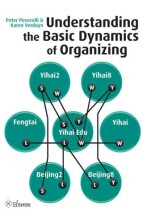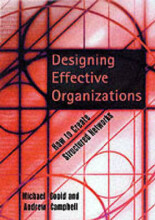Ahuja: Entrepreneurship in the large corporation: a longitudinal study of how established firms create breakthrough inventions
10 important questions on Ahuja: Entrepreneurship in the large corporation: a longitudinal study of how established firms create breakthrough inventions
Ahuja presents a model that explains how established firms create break trough innovations. Which three organizational pathologies (ziekten) that inhibit breakthrough inventions are identified? How can they be overcome?
2. The maturity trap: favor the mature
3. The propinquity (nabijheid) trap: favor search for solutions near to existing solutions.
Ahuja argues that by experimenting with novel (no prior experience), emerging (recent/new developed in industry) and pioneering (do not build on any existing technologies) technologies, firms can overcome these traps and create breakthrough inventions.
The theoretical model of Ahuja explain how established firms create fundamental technological breakthroughs. Which key features has this model?
2. Dynamics make diversity difficult, leading organizations into learning traps that favor specialization and inhibit experimentation
3. Learning traps are manifested in 3 pathologies: favor familiar, prefer mature and search for solutions close to the existing solutions instead of new solutions. Aka: the familiarity, maturity and propinquity trap.
What are novel, emerging and pioneering technologies?
Emerging: are leading-edge technologies that are recent or new to the entire industry
3 Pioneering: have no technological antecedents
> With longitudinal data theses thoughts are tested
- Higher grades + faster learning
- Never study anything twice
- 100% sure, 100% understanding
The distinction between invention and innovation is important according to Ahuja. Define the 2 concepts:
Innovation: commercializing of the invention.
> Focus in this study is on the technological importance of an invention in classifying it as breakthrough/radical. Breakthrough invention = foundational inventions that serve as the basis for many subsequent technological developments.
Ahuja's model of breakthrough inventions in established firms begins with three basic premises drawn from the organizational learning literature. Which 3?
2. Routines are oriented to targeted outcomes
3. In successful or established (mature) organizations, routines and actions are path-dependent and therefore based on interpretations and outcomes of past actions.
Research suggests that refinement of familiar technologies are preferred above the exploration of new ones. Path dependence increases the risk over the organization falling into a familiarity trap. Which solution and hypothesis belongs to this? (Ahuja)
H1: A firm's creation of breakthrough inventions is related to its exploration of novel technologies in a curvilinear (inverted U shaped/kromlijnig) manner.
> Supported
The tendency to favor mature technologies (relatively well known and understood in the industry) can lead to the maturity trap. Which solution and hypothesis has Ahuja formulated with this?
H2: A firm's creation of breakthrough inventions is related to its exploration of emerging technologies in a curvilinear (inverted U shaped) manner.
> Supported
Organizations search for solutions close to the existing solutions. Previously used solutions provide a base of familiarity from which can be moved forward. This can lead to the propinquity trap. What is the solution to this and which hypothesis suits this? (Ahuja)
H3A: A firm's creation of breakthrough inventions is related to its exploration of pioneering technologies in a curvilinear (inverted U shaped) manner = not supported
H3B: A firm's creation of breakthrough inventions is related to its exploration of pioneering technologies.= supported
> this difference occurred because it is connected to financial figures rather than through a decline in the number of breakthrough inventions.
3A = cognitive overload interpretation
3B = Negative consequences of excessive experimentation with pioneering technologies
Summarize the study of Ahuja.
Explain the capability-rigidity paradox regarding the learning traps of Ahuja: (2)
2. Learning creates its own traps: as organizations develop capabilities that improve immediate performance they often simultaneously reduce competence with respect to new paradigms.
The question on the page originate from the summary of the following study material:
- A unique study and practice tool
- Never study anything twice again
- Get the grades you hope for
- 100% sure, 100% understanding






























